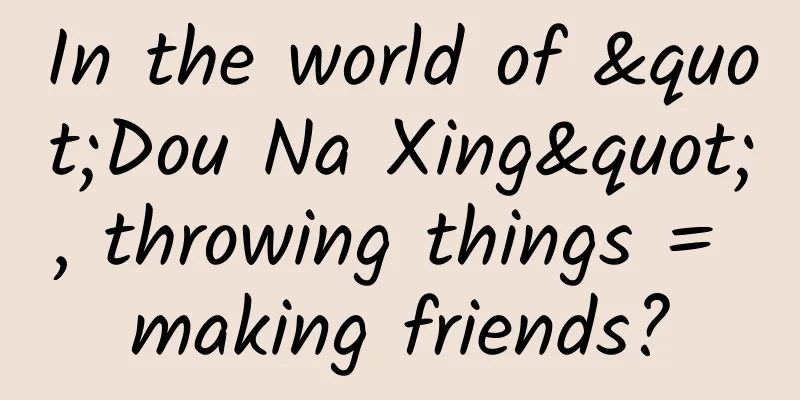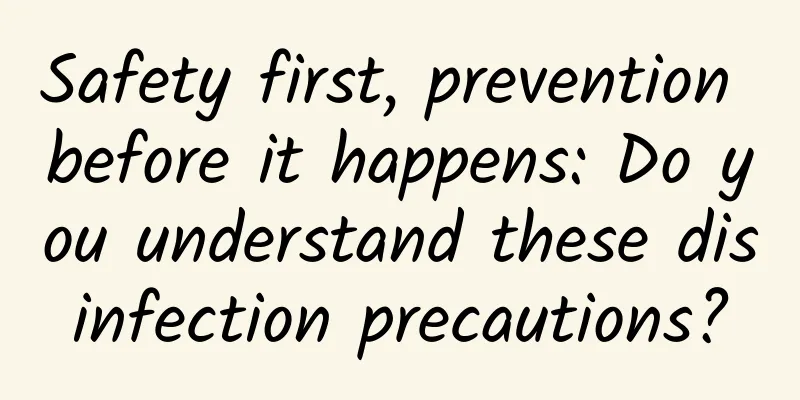In the world of "Dou Na Xing", throwing things = making friends?

|
A few days ago, a chimpanzee in the Nanning Zoo in Guangxi unexpectedly became popular on the Internet. In the video posted by netizens, the chimpanzee picked up lumps of feces and threw them at tourists. Instead of being angry, the tourists were full of interest in the chimpanzee's behavior. They bought tickets to watch it and even gave it a nickname - "Diu Na Xing". And "Diu Na Xing" also increased the ticket revenue of animals by his own efforts, which was a kind of reward for the "shit shoveling officer". (Photo source: The Paper) When seeing the video of chimpanzees playing with feces, it reminds me of the story in the 39th chapter of "Water Margin" in which Song Jiang was exiled to Jiangzhou. In order to escape the charge of writing anti-government poems on Xunyang Tower, he pretended to be crazy and stupid, and made himself "covered in the stench of feces." Part 1 Chimpanzees: A Mirror of Humanity in the Animal World The unexpected popularity of "Diunaxiong" may be because humans see their own shadows in chimpanzees. As close relatives of humans, chimpanzees differ from humans by only about 1% at the genome level. They are a mirror of humans in the animal world, and we can find many human shadows in them. For example, in the entire animal kingdom, chimpanzees, like humans, can perform rhythmic "dance" movements to music that they rarely perform at other times. At the same time, chimpanzees can also make and use tools, and even cooperate with each other to hunt. When fighting with other chimpanzee groups, they are proficient in the strategy of forming alliances. Group of chimpanzees standing in tall grass (Photo source: Veer Gallery) Chimpanzees have a strict hierarchy in their society. In their groups, there are brutal fights, intrigues, and tender comfort. Dutch zoologist Frans de Waal once expressed his feelings in his book "Chimpanzee Politics": "Politics is by no means a human monopoly. The origin of chimpanzee politics is far earlier than that of humans." Perhaps it is precisely because humans and chimpanzees have so many similarities that humans are so interested in their various behaviors. Regarding the behavior of "Diunaxiong", most tourists will focus on the feces it throws. However, primate researchers are more inclined to focus on the chimpanzee's "throwing" behavior. There are many "experts" in the animal kingdom who can make and use tools, but it is extremely rare to find animals that can "throw" (or throw things). From a neurobiological perspective, the behavior of "throwing" is extremely complex. On the surface, it only requires hand-eye coordination, but the brain needs neurons to help calculate the moving distance of the thrown target, the initial velocity of the thrown object, and the relationship between the two. In short, "throwing things" is a high-level behavior. So why are chimpanzees in zoos throwing feces at humans? Part 2 Throwing feces is actually a social behavior The first thing to consider is whether chimpanzees have this "throwing" behavior in the wild. If this behavior only exists in the zoo and not in the wild, it is very likely that the zoo environment interferes with the normal life of the chimpanzees, thus causing the chimpanzees to throw things. In fact, in the wild, chimpanzees also throw things, but they do not throw feces, but branches or stones. Chimpanzees have a strict social hierarchy, and they do not throw things for entertainment, but to express certain emotions, such as frustration, anger, etc., or to establish a certain hierarchical advantage in the group through this behavior. From the perspective of animal behavior, the behavior of chimpanzees throwing things can be considered as part of their social behavior and a form of communication. They can use this method of communication to determine the hierarchical status of each other in the group. chimpanzee (Photo source: Veer Gallery) Primatologists have decomposed the actions of chimpanzees throwing objects, and found that their throwing behavior is composed of a series of coherent actions. When chimpanzees want to throw a branch, they first make a waving motion, then lift the branch behind their heads, swing it forward, and finally jump up and throw it. From the details of this action, we can see that their throwing behavior is actually more about form than content. They want to achieve a certain purpose through this action, such as attracting the attention of their companions, rather than directly causing harm to their companions. After throwing, the chimpanzees will pay close attention to their companions' actions, observing whether they will squat, run away, or do other things. The feedback from their companions is exactly the purpose of chimpanzees throwing things. They can get the answers they need from them - how to influence other individuals through their own behavior, so as to determine their own level in the group. Part 3 Could the orangutans' throwing behavior serve some other purpose? Some people may say, "You are not a fish, how do you know the joy of a fish?" Not all people are animal behaviorists, and many people do not buy into the conclusions drawn about chimpanzee behavior. Some people believe that animal behaviorists are not chimpanzees, so how can they know what chimpanzees are thinking. So, how can we prove that chimpanzees throw things for communication rather than for other purposes? Chimpanzee sitting in a tree eating (Photo source: Veer Gallery) Scientists have used scientific and technological means to analyze the response of chimpanzees' throwing actions in their brains. Scans of chimpanzees' brains show that chimpanzees' throwing behavior stimulates the motor cortex of their brains. Chimpanzees who throw accurately have more developed cerebral cortex on the side opposite to the hand they use to throw. Studies have shown that 90% of chimpanzees who use their right hand to throw things have more developed left hemispheres in their brains. These developed parts include Broca's area. This area is responsible for language processing, including language production. Since language is related to communication behavior, the question is, are chimpanzees who are good at throwing things more eloquent and good at communication? Two chimpanzees (Photo source: Veer Gallery) Part 4 Chimpanzees who know how to throw are actually good at communication Scientists continued to test chimpanzees. They divided the chimpanzees into two groups, one group was good at throwing objects and the other was not good at throwing objects. Then they tested the spatial memory, instantaneous memory, communication ability, etc. of the two groups of chimpanzees. Scientists tested the chimpanzees' communication ability by understanding human eye contact and movements. The results showed that compared with ordinary chimpanzees, chimpanzees who were good at throwing performed better in communication ability, but there was no difference in other abilities. Therefore, scientists once again proved from the perspective of brain science that chimpanzee throwing behavior is related to communication. Back in the zoo, the chimpanzees still retained this throwing behavior, but there were no small stones or branches in front of them. The only objects they could throw were the feces in front of them. So the "Diunaxiong" feces throwing behavior appeared. They used this to test the reactions of the humans around them and thus achieve communication with humans. Chimpanzee eating (Photo source: Veer Gallery) Part.5 Conclusion Next time, when you see a chimpanzee throwing feces at you, don't be nervous, it's not malicious, but it treats you as one of its own and wants to see your reaction by throwing feces. In other words, throwing feces at you means it respects you. Produced by: Science Popularization China Author: Zhao Xumao (Young Researcher, Lanzhou University) Editor: Ying Yike Producer: China Science Expo The article only represents the author's views and does not represent the position of China Science Expo This article was first published in China Science Expo (kepubolan) Please indicate the source of the public account when reprinting Please indicate the source of the reprint. Reprinting without authorization is prohibited. For reprint authorization, cooperation, and submission matters, please contact [email protected] |
>>: Food Safety | Don’t reheat these 6 foods! It’s best to throw away the leftovers
Recommend
Google has issued new rules! Without these features, Android system is prohibited from use
Compared to iOS, which is a closed system, Androi...
An ancestral precept has governed the country for 600 years. This "pearl" in the vast forest of northern Fujian is creating an ecological miracle.
Wanmulin Nature Reserve in Jianou City, Fujian Pr...
APP Promotion Tips | Make good use of Weibo light application and you can use big tricks without spending any money!
Preface The concept of light applications was pro...
The title of the video with one million views on Bilibili deserves to be so popular!
Hello friends, I was looking for topics on Bilibi...
This highly poisonous plant feeds at least 800 million people. You must have eaten it.
A 17th-century natural history painting of cassav...
Zhang Jian's growth path in key customer sales | Compilation
What kind of course is this? "The Road to Gr...
Wearing a mask for a long time can cause lung nodules to grow larger? Don't believe these rumors
The weather will become colder when the Earth rea...
Baidu search promotion information flow bidding advertising display style - large picture style!
Information flow advertising style - large pictur...
Priceonomics: Global AI investment analysis
Much of the current AI investment is led by large...
Three subtle details of Swift extensions
Whenever I first look at a document, I skim throu...
IHS: China's industrial robot market value reached US$1.3 billion in 2015, with a compound annual growth rate of 20%
On April 20, 2016, according to statistics from I...
Why is Xiaomi in such a hurry to launch Xiaomi TV 2?
According to the new product release rules of the ...
After listening to the "gambler's" warning, I learned how to edit photos and make the camera turn.
From Grand Theft Auto, The Witcher 3 to Red Dead ...
How much does it cost to customize a hardware app in Anyang?
The main factors affecting the price of mini prog...
Sperm whales are quite smart, so why do they always get stranded?
Whale strandings are nothing new and occur almost...









